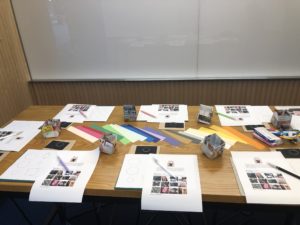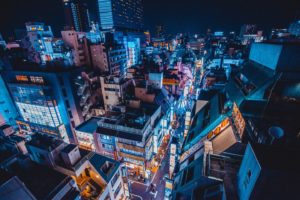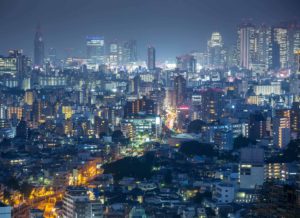We are currently undergoing development of direct booking channel.
Until it is fully and beautifully done, please book through our main Airbnb accounts below:
https://www.airbnb.com/users/63345781/listings
Thank you and sorry for the inconvenience.
We are currently undergoing development of direct booking channel.
Until it is fully and beautifully done, please book through our main Airbnb accounts below:
https://www.airbnb.com/users/63345781/listings
Thank you and sorry for the inconvenience.
We had an honored to be featured on Sugared & Spiced – a popular independent blog about ‘food and such, around the world.’
Contents are bilingual and can be viewed from below link. Thank you Cindy, for staying with us. It was an absolute pleasure to host you.
We held our 1st paper cutting workshop in June with Sensei Emi.
Emi is a Tokyo-based paper-cut artist who is heavily influenced by Okinawan stencil designs. Paper-cutting is an ancient traditional art and has been around for hundreds of years. While studying these traditions, Emi has developed her own style that is steadfastly rooted in Japanese aesthetic principles. A constant traveler herself, Emi finds inspiration for her work in nature and the stories she hears from the artisans she meets during her journeys. She is currently working as the illustrator, and she has also taught paper-cutting in American for the past two years. Emi’s mission is to keep this tradition alive while sharing artistic skills and cultural experiences with others.
The lucky intheHood’s guests from France, USA, Singapore and Taiwan joined the workshop. During this two hour guided workshop, guests learned the basics of papercutting and craft a bookmark based on a Japanese design. Guests chose both the design and the colored paper that they wish to use including nature and family crest themed designs. Emi also shared insider tips on where to get Japanese washi paper, art supplies, and even some of her favorite Tokyo shops for finding handmade folk art.

 Tokyo, officially Tokyo Metropolis, one of the 47 prefectures of Japan, has served as the Japanese capital since 1869. As of 2018, the Greater Tokyo Area ranked as the most populous metropolitan area in the world. The urban area houses the seat of the Emperor of Japan, of the Japanese government and of the National Diet. Tokyo forms part of the Kantō region on the southeastern side of Japan’s main island, Honshu, and includes the Izu Islands and Ogasawara Islands.
Tokyo, officially Tokyo Metropolis, one of the 47 prefectures of Japan, has served as the Japanese capital since 1869. As of 2018, the Greater Tokyo Area ranked as the most populous metropolitan area in the world. The urban area houses the seat of the Emperor of Japan, of the Japanese government and of the National Diet. Tokyo forms part of the Kantō region on the southeastern side of Japan’s main island, Honshu, and includes the Izu Islands and Ogasawara Islands.
Tokyo was formerly named Edo when Shōgun Tokugawa Ieyasu made the city his headquarters in 1603. It became the capital after Emperor Meiji moved his seat to the city from Kyoto in 1868; at that time Edo was renamed Tokyo. Tokyo Metropolis formed in 1943 from the merger of the former Tokyo Prefecture and the city of Tokyo. Tokyo is often referred to as a city but is officially known and governed as a “metropolitan prefecture”, which differs from and combines elements of a city and a prefecture, a characteristic unique to Tokyo.

The 23 Special Wards of Tokyo were formerly Tokyo City. On July 1, 1943, it merged with Tokyo Prefecture and became Tokyo Metropolis with an additional 26 municipalities in the western part of the prefecture, and the Izu islands and Ogasawara islands south of Tokyo. The population of the special wards is over 9 million people, with the total population of Tokyo Metropolis exceeding 13.8 million. The prefecture is part of the world’s most populous metropolitan area called the Greater Tokyo Area with over 38 million people and the world’s largest urban agglomeration economy.
 As of 2011, Tokyo hosted 51 of the Fortune Global 500 companies, the highest number of any city in the world at that time. Tokyo ranked third (twice) in the International Financial Centres Development Index.[citation needed] The city is home to various television networks such as Fuji TV, Tokyo MX, TV Tokyo, TV Asahi, Nippon Television, NHK and the Tokyo Broadcasting System.
As of 2011, Tokyo hosted 51 of the Fortune Global 500 companies, the highest number of any city in the world at that time. Tokyo ranked third (twice) in the International Financial Centres Development Index.[citation needed] The city is home to various television networks such as Fuji TV, Tokyo MX, TV Tokyo, TV Asahi, Nippon Television, NHK and the Tokyo Broadcasting System.